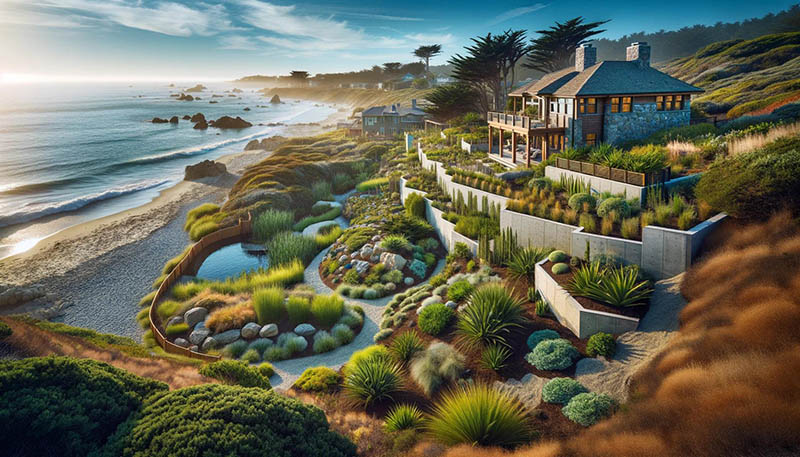Backyard Ideas to Impress Your Guests and Keep You Entertaining All Summer

As the days grow longer and the temperatures rise, there’s no better time to transform your backyard into an inviting oasis perfect for entertaining. Whether you’re planning intimate gatherings or lively summer parties, a well-designed outdoor space can make all the difference.
We’ve gathered a collection of backyard ideas that will not only impress your guests but also keep you outside enjoying every moment of the season. From cozy seating areas to stylish lighting and fun features, these tips will help you create the ultimate summer retreat.

Create Cozy Seating Areas
One of the keys to a great backyard is having comfortable and inviting seating areas. Consider a mix of options to cater to different moods and group sizes.
- Outdoor Sofas and Sectionals: Perfect for lounging and conversation, outdoor sofas and sectionals provide ample seating and a relaxed vibe. Opt for weather-resistant materials and plush cushions to ensure comfort and durability.
- Hammocks and Swing Chairs: For a touch of whimsy and relaxation, add hammocks or swing chairs. These are great for unwinding with a book or simply enjoying a lazy afternoon.
- Fire Pit Seating: A fire pit creates a focal point and extends your outdoor enjoyment into the cooler evenings. Arrange chairs or benches around the fire pit to encourage conversation and coziness.

Enhance with Stylish Lighting
Lighting sets the mood and can transform your backyard into a magical evening retreat. Consider a variety of lighting options to highlight different areas and create ambiance.
- String Lights: Draped across patios, pergolas, or trees, string lights add a warm and inviting glow. They’re versatile and perfect for creating a festive atmosphere.
- Lanterns and Candle Holders: Scatter lanterns and candle holders around seating areas and pathways. They provide soft, flickering light and can be moved as needed.
- Solar Path Lights: Illuminate walkways and garden paths with solar-powered lights. They’re eco-friendly and automatically turn on at dusk, adding both safety and charm.

Incorporate Fun Features
Make your backyard the ultimate entertainment spot with fun and interactive features that will delight guests of all ages.
- Outdoor Kitchen and Bar: An outdoor kitchen or bar is a game-changer for entertaining. Equip it with a grill, mini-fridge, sink, and storage for a fully functional space. A bar area with stools adds a social hub for guests to gather around.
- Water Features: Adding a water feature like a fountain, pond, or waterfall brings a soothing element to your backyard. The sound of running water creates a tranquil environment and can be a visual centerpiece.
- Games and Activities: Set up lawn games like cornhole, bocce ball, or giant Jenga to keep guests entertained. If space allows, consider a small sport court for basketball or volleyball.
Embrace Lush Landscaping
Lush landscaping enhances the beauty and serenity of your backyard. Incorporate a variety of plants, trees, and flowers to create a vibrant and inviting space.
- Flower Beds and Planters: Add color and texture with well-maintained flower beds and planters. Choose a mix of perennials and annuals for continuous blooms throughout the summer.
- Shade Trees and Pergolas: Provide relief from the summer sun with shade trees or pergolas. These structures not only offer shade but also add architectural interest to your backyard.
- Herb and Vegetable Gardens: Incorporate an herb or vegetable garden for fresh, homegrown produce. Raised beds or vertical gardens are great options for maximizing space and adding greenery.
Add Comfortable Dining Spaces
An inviting dining area is essential for hosting summer meals and gatherings. Create a space that encourages lingering over good food and conversation.
- Dining Tables and Chairs: Choose a dining set that accommodates your typical guest count. Opt for durable materials like teak, aluminum, or weather-resistant wicker to withstand the elements.
- Shade Solutions: Provide shade with umbrellas, pergolas, or shade sails to ensure guests are comfortable during daytime meals. Consider a retractable awning for flexibility.
- Table Decor: Elevate your dining area with thoughtful table decor. Fresh flowers, candles, and stylish table settings create a welcoming and festive atmosphere.
Integrate Technology
Modern technology can enhance your backyard experience, making it more enjoyable and convenient.
- Outdoor Speakers: Set the mood with music by installing outdoor speakers. Choose weather-resistant models that can withstand the elements.
- Smart Lighting: Control your outdoor lighting with smart technology. Set schedules, adjust brightness, and change colors to suit different occasions.
- Outdoor TV and Projector: For the ultimate entertainment experience, set up an outdoor TV or projector. This is perfect for movie nights, sports games, or watching your favorite shows under the stars.
Conclusion
Transforming your backyard into a space that impresses guests and keeps you entertained all summer is easier than you might think. By incorporating cozy seating, stylish lighting, fun features, lush landscaping, comfortable dining areas, and modern technology, you can create a backyard oasis that you’ll never want to leave. Whether you’re hosting a casual barbecue or an elegant evening soiree, these ideas will help you make the most of your outdoor space.
Contact Evergreen Landscaping today to get help with your gardening and landscaping needs. Let us help you create the backyard of your dreams.
























